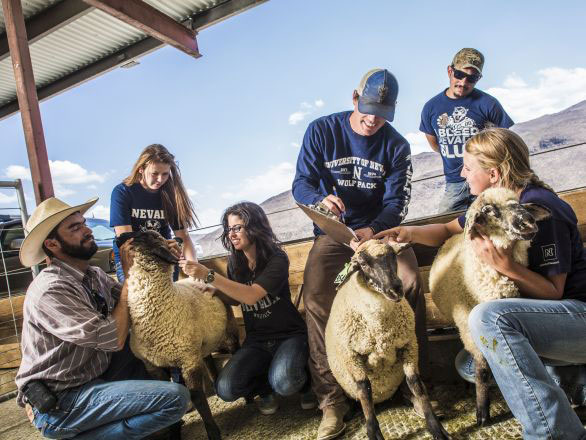Assessment and oversight of the University’s program of animal care and use and its animal housing facilities.

Purpose
The Institutional Animal Care and Use Committee (IACUC) oversees all research and teaching use of live vertebrate animals campus wide. The committee also helps to oversee the implementation of the occupational health and safety program for persons working with vertebrate animals in research and teaching programs at the University. These responsibilities encompass work of all types, including biomedical, agricultural and wildlife projects, among others. The IACUC membership is appointed by the institutional official and includes veterinarians and faculty scientists, as well as non-scientists and general community representatives who have no affiliation with the University. The establishment of institution-specific IACUCs and their specific responsibilities are mandated by federal animal welfare laws and policies and are also noted within the University Administrative Manual (6,512: Policy on the Use of Animals in Teaching, Research, Extension, and Testing).
Committee issues and regulatory responsibilities
- Review all proposed use of live vertebrate animals by University faculty across the breadth of animal use locations (including their transportation) before the activity is initiated
- Review any requested changes to an approved activity
- Review the University's program of care for the humane care and use of animals every six months
- Generate reports of its findings to the institutional official, including recommendations for program improvements
- Evaluate compliance with all applicable laws and policies regarding the use of vertebrate animals within our program of care
- Investigate any concerns or complaints regarding the use of animals
- Suspend any activity using live vertebrate animals if it is being conducted in a manner not in accordance with the applicable animal welfare laws and policy standards of the institution
- Conduct a post approval monitoring (PAM) program of all animal use areas of campus facilities
- Inspect all animal facilities, transport vehicles, and involved laboratories every six months
University credentials
- USDA certificate #88-R-0005
- PHS Assurance Number – D16-00311 (A3500-01)
- AAALAC accredited since 2007
Major regulatory drivers
- United States Department of Agriculture Animal Welfare Regulations (PDF)
- Public Health Service Policy on Humane Care and Use of Laboratory Animals
- Public Health Service Policy on Humane Care and Use of Laboratory Animals (PDF)
- Office of Laboratory Animal Welfare
- International AAALAC standards
- The Guide for the Care and Use of Laboratory Animals (The Guide), 8th Ed.
- The Guide for the Care and Use of Laboratory Animals (The Guide), 8th Ed. (PDF)
- The Guide for the Care and Use of Agricultural Animals in Research and Teaching (Ag Guide), 4th Ed. (PDF)
- American Veterinary Medical Association guidelines on euthanasia
- University Administrative Manual | 6,512: Policy on the Use of Animals in Teaching, Research, Extension, and Testing
- IACUC policies – please email iacuc@unr.edu to obtain access

